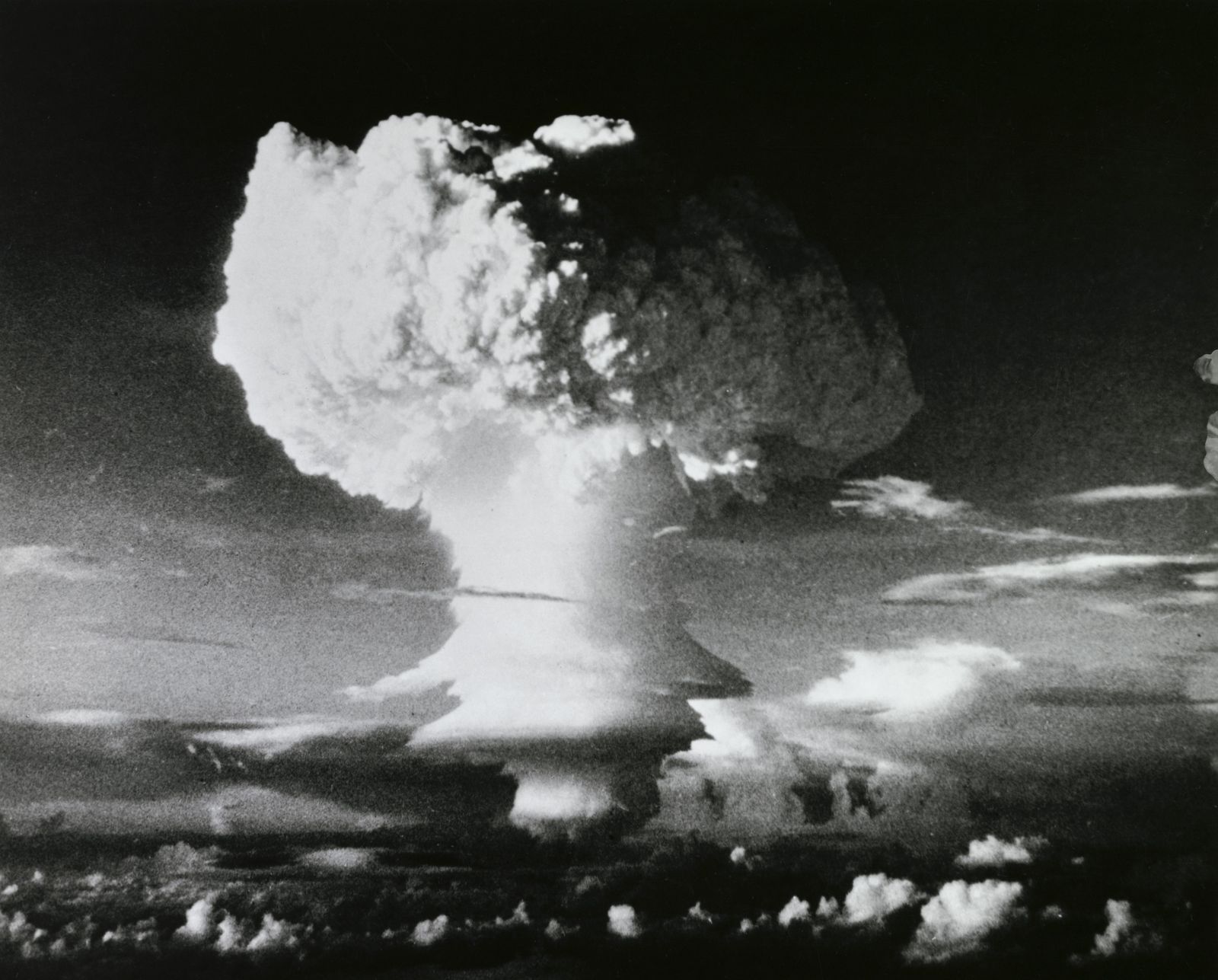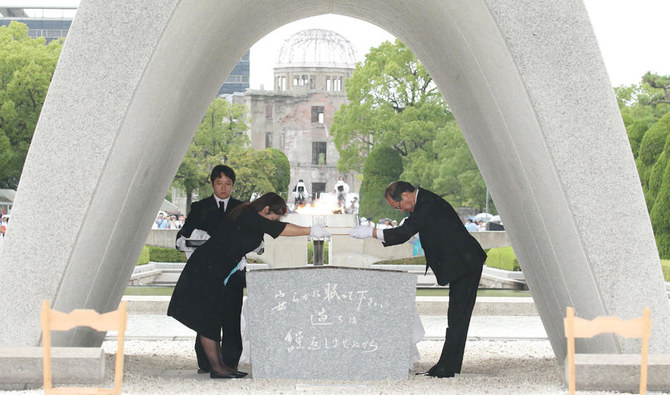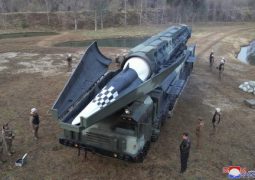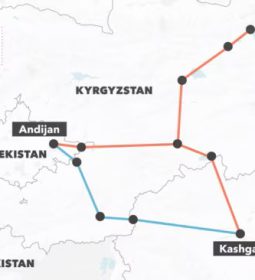Atomic Dooms Day scenario comes back for discussion by wider public: What are the reasons!?

Project Force: Could the world survive a nuclear winter?
The consequences of a nuclear war would extend far beyond the blast itself, killing millions of people across the globe.
Alex Gatopoulos
Firestorms triggered by burning cities create a huge plume of smoke, soot and ash. The plume rises above the clouds, into the upper atmosphere of the planet, where it will stay, encircling the globe, shielding the Earth from the Sun’s light, cooling the planet.
This is the scenario we could expect following a nuclear clash between nations.
The term nuclear winter was coined in the 1980s as scientists began to realise that the horrors of a nuclear war would not be confined to explosive blasts and radiation.
As climate prediction models become more powerful and sophisticated, scientists have been able to examine more closely what would happen in a nuclear conflict between two antagonists. In the past, most scenarios focused on potentially apocalyptic conflicts between Russia and the United States.
But new models now predict that even a very limited nuclear war would have drastic knock-on effects for global agriculture and dire consequences for life on Earth.
Only two nuclear weapons have ever been used in warfare – when the US bombed the Japanese cities of Hiroshima and Nagasaki. The two bombs exploded with the combined destructive power of around 37,000 tonnes of high explosive [Al Jazeera]
Anatomy of a nuclear blast
A blast from a modern nuclear weapon would produce a vast amount of energy almost instantly. The effects would be devastating.
First, a blinding flash of light and radiation in the form of heat from the initial explosion would produce temperatures as high as that of the Sun. Wood, plastics, fabrics and flammable liquids would all ignite.
This would almost immediately be followed by the blast wave, moving at several times the speed of sound. A wall of compressed superhot air, the wave would gather up rubble and anything moveable, levelling all buildings within the blast zone and killing everyone in its path for several kilometres.
Within 20 to 30 minutes, a shroud of highly radioactive ash would begin to fall, blanketing both the blast site and the surrounding area, tens of kilometres downwind, and very quickly killing anyone caught outdoors who had somehow managed to survive the initial explosion.
For people outside the blast zone, the situation would also be grim. All electronic equipment would cease to function as the electromagnetic pulse fried every electronic circuit. No phones, internet, computers or cars would work.
Hospitals would be quickly overwhelmed, with the vast majority of the population needing some kind of medical care. Food would disappear as logistical supply trains stopped working. What little there was would be contaminated by the radioactive fallout, along with any water.
In the case of a nuclear conflict between India and Pakistan, for example, it is estimated that between 50 million and 125 million people would die.
What comes afterwards?
Those would be the initial, local effects of a nuclear conflict on a population. But the ensuing nuclear winter would take it to a whole new level.
The vast plumes of dark soot entering the upper atmosphere would spread not just regionally but right around the planet within months. The resulting darkening of the sky would severely affect harvests, even in areas nowhere near the conflict zone.
In one recent simulation, global harvests fell between 20 percent and 40 percent for at least a decade. Temperatures dropped dramatically as the climate shifted, triggering widespread drought, a worldwide famine and the death of tens of millions more people.
When Mount Tambora erupted in Indonesia in 1815, the ash it spewed into the atmosphere cooled the Earth by 0.7 degrees centigrade. Even a “limited” nuclear exchange could result in a temperature drop of up to five degrees centigrade [Al Jazeera]
If these scenarios seem far-fetched, consider that the 1815 volcanic eruption of Tambora in Indonesia ruined harvests as far away as the US with 1816 known as the “Year Without Summer” as temperatures dropped sharply around the planet and the resultant failed harvests triggered severe famine across Europe.
The Tambora eruption lowered the global temperature by 0.7 degrees Celsius. The estimated temperature drop from a “limited” nuclear exchange is reckoned to be anywhere between 2 and 5 degrees Celsius.
The Pakistan vs India scenario
The latest studies show that there does not need to be a large-scale nuclear war to have this effect: A possible nuclear conflict between India and Pakistan is the scenario most of these studies have used as their prime example.
Why India and Pakistan? They are traditional enemies, with long-standing and unresolved territorial disputes between them. They are nuclear-armed, and both adhere to military doctrines that could potentially trigger a conflict.
India implements a pro-active or “Cold Start” doctrine for conventional attacks on Pakistan. This involves placing military units as close to the area of operations as possible, coupled with the pre-placing and stockpiling of military materiel such as ammunition, medical supplies, anything that can be used to sustain an advance.

This allows for the swift deployment of armed forces and is designed to deliver a short, sharp, severe shock to the enemy before international diplomatic pressure can halt the conflict.
There is any number of scenarios where these historical foes could or would use nuclear weapons, but a more likely one might begin with a conventional attack by India, whose army is three times the size that of its adversary.
Geographically, Pakistan is a long, thin country that is relatively easy to cut in two using armoured thrusts, most likely through India’s Thar desert in Rajasthan, near Pakistan’s narrowest point.
Finding itself in danger of being overrun, Pakistan could offset its smaller armed forces by blunting any offensive with smaller, tactical nuclear weapons. These are designed to destroy enemy concentrations while inflicting minimal damage on the surrounding area, since it would be likely that Pakistan would be using them on or near its own soil.
It is this combination of India’s shortcut to large-scale military action, combined with Pakistan’s reliance on battlefield nuclear weapons that has the potential for a conflict to rapidly escalate.
A nuclear conflict between India and Pakistan could kill as many as 125 million people, making it one of the deadliest events in human history [Al Jazeera]
Regardless of how India reacts once struck, the taboo over using these weapons would be broken, and the threshold for further use by both sides would be far lower.
Command-and-control centres, supply nodes and industrial areas would be considered legitimate targets. Most of these – ports, railway junctions, factories, headquarters and seats of government – are located in cities, whose populations would be considered forfeit.
In a conflict that goes nuclear between the two countries, a recent academic paper puts the potential death toll as high as 125 million people. To put that into perspective, the current annual global death rate from all causes is about 56 million people. In such a conflict, these casualties would occur in a matter of days.
As terrible as all that is, the greatest damage to the environment would be from the vast amount of superheated ash and soot that would rise from these destroyed cities, swept up by a nuclear firestorm into the upper atmosphere.
Darkness and starvation
The impact of even such a “limited” nuclear conflict would be devastating for the Earth as a whole. With global dimming, harvests would fail across the planet.
the planet.
Basic staples would be severely hit as one study shows that China’s wheat production would halve in the first year after a conflict, its rice production dropping by 21 percent.
The US’s corn supply would drop by as much as 20 percent. International supply chains would falter as food became scarce. Hoarding, panic buying and price gouging would become commonplace, leading to further scarcity and marginalising the world’s poor who would struggle to survive the ordeal.
In 2016, the United Nations’ Food and Agriculture Organisation estimated that 815 million people were food-insecure. They would all be put at far greater risk as food supplies rapidly dwindled in the aftermath of such a conflict.
Another major, cascading effect of even a partial nuclear winter would be the depletion of the ozone layer, allowing crops to be further damaged by unfiltered hard ultraviolet solar radiation.
Ozone would be destroyed by the heating of the upper atmosphere as the darker soot-laden layer of air absorbed more solar energy. The effect would last for more than five years, with 20 percent of the ozone lost across the planet and, in some places, as much as 70 percent, leading to significant destruction of plant, marine and animal life on Earth, and resulting in skin cancers, DNA mutation and eye damage in humans and animals alike.
This, coupled with the violent competition for shrinking resources, likely civil unrest due to mass starvation, rapidly shifting weather patterns and financial collapse, would disrupt all human life with no part of the planet left unscathed.
While the physical effects of a nuclear winter would begin to dissipate after a decade as the sky started to clear, the catastrophic consequences of even a localised nuclear conflict would have far-reaching consequences.
The bombs dropped on Hiroshima and Nagasaki are tiny when compared to the weapons in modern nuclear arsenals [Al Jazeera]
This nightmarish scenario is based on just a relatively small nuclear conflict between two minor nuclear powers who together possess 230 nuclear weapons.
By contrast, the US and Russia have a staggering 12,675 nuclear warheads between them.
They are not the only ones; China, France, the United Kingdom, Israel and North Korea also possess these deadly weapons, all able to inflict catastrophic damage on the planet.
- Previous Catch 202: Tsu Tsvang in Lebanon: Beirut faces its worst crisis since the civil war
- Next Biblical proportions floodings in Japan: At Least 179 Dead in Japan’s Calamitous Flooding And this natural disaster will be won by brave Japanese
















